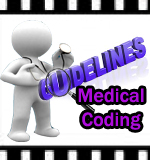I am always amazed at how many medical coders do not reference the ICD-10-CM official conventions and guidelines for coding and reporting.
In fact, at a Medicare seminar I attended many years ago, I recall my instructor, a Medicare auditor, casually saying, “You should read the coding guidelines once in a while in the front of the manual. It’s pretty interesting stuff.”
Seriously. Interesting stuff? I didn’t grasp the ludicrousness of her remark until a year later when I began studying for my CPC.
The Coding Conventions & Guidelines exist for a reason: to help choose the most accurate diagnosis code(s) to represent a provider’s documentation.
Every claim must tell a true story of a patient encounter. In order to properly use the ICD-10-CM, the Conventions and Guidelines must be read, highlighted, and referenced on a continuous basis.
I will point out a few examples from the Medical Coding Conventions and Guidelines, with the sole intention of inciting you to dig deeper into the manual and learn as much as you can in order to be a valuable asset in the coding community.
CONVENTIONS
The letters NEC represent the abbreviation “not elsewhere classifiable”. This simply means that the medical record provides detail for which a specific code does not exist in the ICD-10-CM manual. In other words, the book does not contain enough information to match the diagnosis code the provider has given.
The abbreviation NOS, “not otherwise specified”, basically means the medical record is insufficient to assign a more specific code. In simple terms, the provider’s information is inadequate to locate a code.
A default code is the code listed next to the main term. The default code represents the condition most commonly linked with a main term. For example, “otitis” is a listed diagnosis code with the word “acute” next to it. This is a supplementary word that may be present or absent in the statement of a disease or procedure without affecting the code to which it is assigned.
Learn your Medical Coding Conventions and Guidelines
When the term “and” is used in a statement, it may be interpreted as, “and/or”.
You will also find instructional notes that say code first or use additional code. These are sequencing instructions that must be followed.
A “code also” note alerts the coder that more than one code may be required to fully describe the condition.
A good tip to remember when looking up a code in the Alpha Index is to work from the right to the left. For example: Parkinson’s Disease: look up “Disease” first, then “Parkinson’s”.
Again, let me stress that I am only mentioning a few examples of what is in the Coding Convention & Guidelines. It is up to you to study these rules and understand them.
MEDICAL CODING GUIDELINES – A Few Basic Rules
- If a provider does not document what type Diabetes Mellitus a patient has (Type I or II), a coder will use Type II as the default code.
- Combination Codes are a single code to classify two diagnoses, or a diagnosis with an associated secondary manifestation or a diagnosis with an associated complication. (Example: Diabetes with Peripheral Circulatory Disorder).
- Code signs and symptoms when a definitive diagnosis has not been confirmed in a doctor’s office.
- If a fracture is not indicated as opened or closed, default to closed fracture.
There are many more coding conventions and chapter guidelines in your ICD-10-CM manuals this article does not reference. As a coder, it is your responsibility to become intimate with the information on all of these pages. Highlight and tab sections that apply to your particular specialty if necessary, but never overlook this information.
For a comprehensive program in understanding the coding rules, I strongly recommend Laureen’s CPC training program or CPC Blitz. I have studied a variety of training methods and I honestly have found Laureen’s teaching style to be more visual and easy to understand.
![[CCO] Certification Coaching Organization LLC [CCO] Certification Coaching Organization LLC](https://www.cco.us/wp-content/uploads/2015/05/CCO-Logo-2015-d3-500px.png)

Thank you for this insight on coding conventions and guidelines. As a medical assisting student working through my externship, it was beneficial.